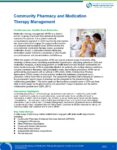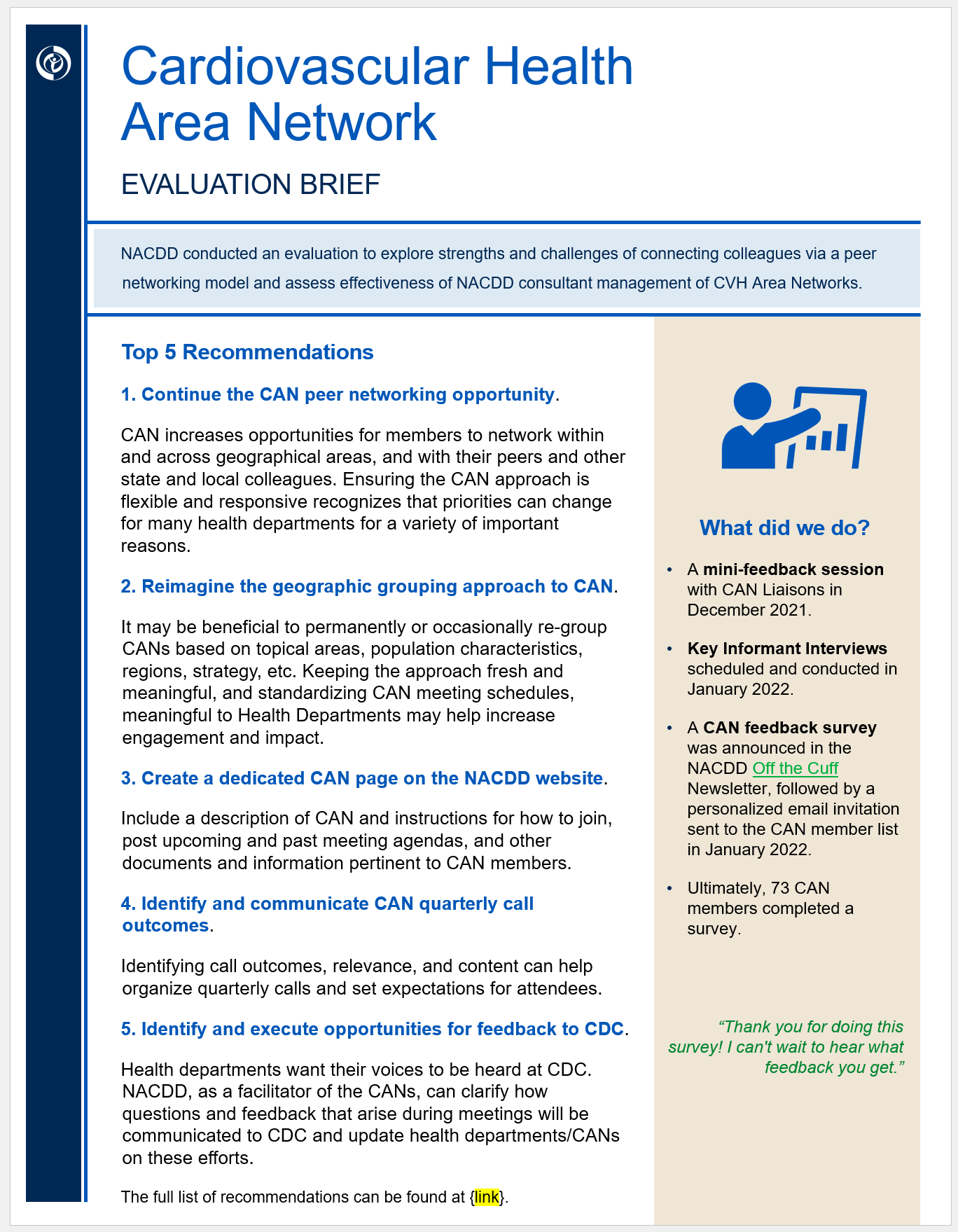What is the CVH Area Network (CAN)?
NACDD launched the Cardiovascular Health (CVH) Area Network (CAN) in January 2021 to build connections within eight geographic areas. Quarterly calls are led by peer liaisons and held to facilitate sharing of promising ideas and state-developed resources among those working on CDC-funded 1815 and 1817 Category B strategies. In 2022 quarterly calls were held to increase state-to-state discussion around topic-specific strategy areas.
Click the map to see the CAN Liaisons for each area.
CVH Area Network Call Series
To increase state-to-state connections and to allow for topic-specific discussions, all calls were open to any state/locality.
For more information on how we developed this model, please see the CAN Evaluation below.
Recordings are now available!
If you missed a call and would like to revisit any of them, recordings are available on topics such as SMBP Sustainability, Developing Community Pharmacy Partnerships, Using Z codes, and many others!
Topics Discussed:
- Community Pharmacy Engagement
- Medication Therapy Management
- Sustainability – Planning, Implementation, and Sharing Tools
- Health Systems on Z codes and addressing Social Determinants of Health
- Team-Based Care
- Adoption and Utilization of Electronic Health Records and Quality Improvement
- Self-measured Blood Pressure Monitoring (SMBP) Sustainability
We “CAN” accomplish Peer Networking with CAN!

Evaluating the CAN Model of Peer Networking
To deepen their understanding of the value of this new approach to connecting colleagues via a peer networking model, NACDD conducted a process evaluation in 2021-2022.
The goal of the process evaluation was to:
- Understand the strengths and challenges of an area network peer networking model;
- Identify and document any best practices of an area network peer networking strategies; and
- Document internal processes and assess effectiveness of NACDD consultant management of CVH Area Networks.
CAN Evaluation Brief
A summary of results from the 2021-2022 CAN process evaluation brief is available here.
The full evaluation report is available by request only. Please contact Julia Schneider to request a copy.





